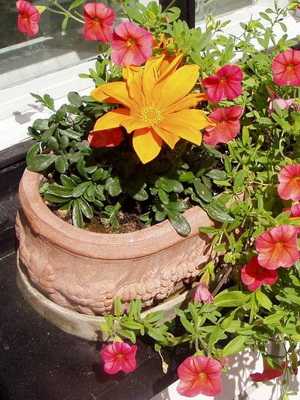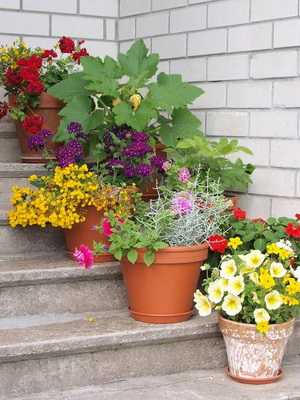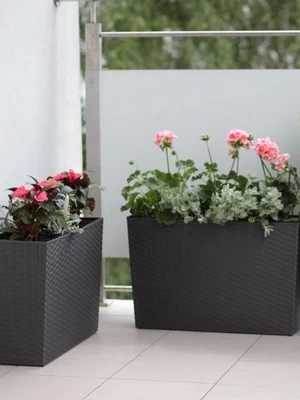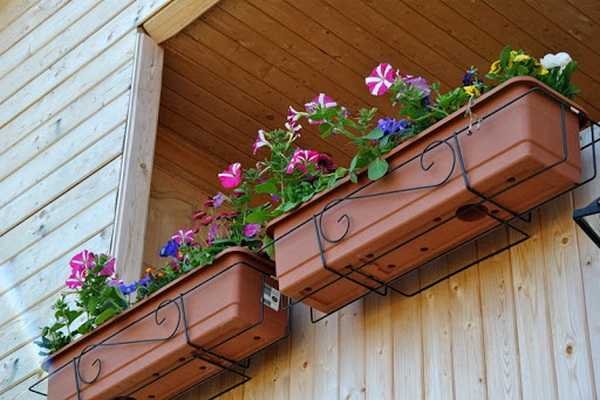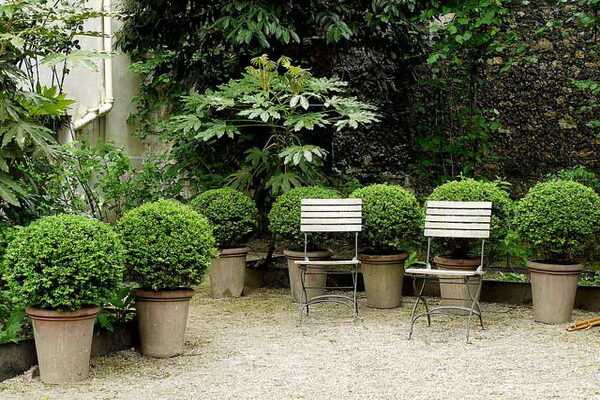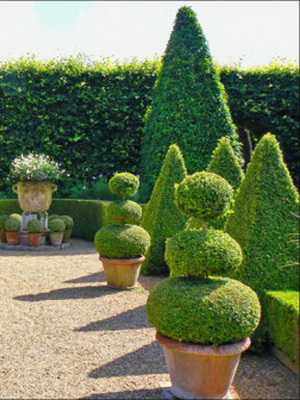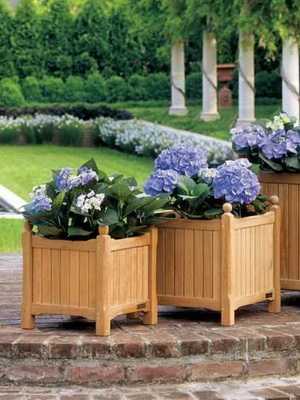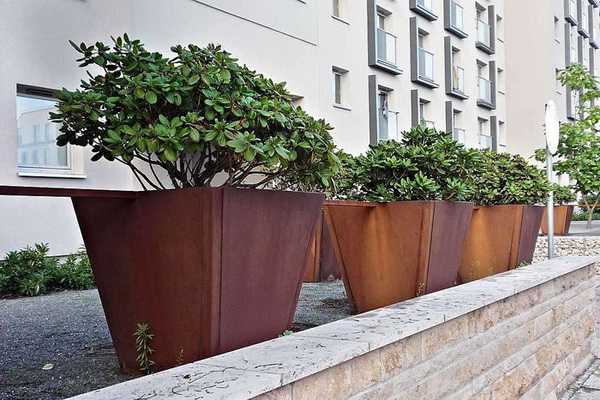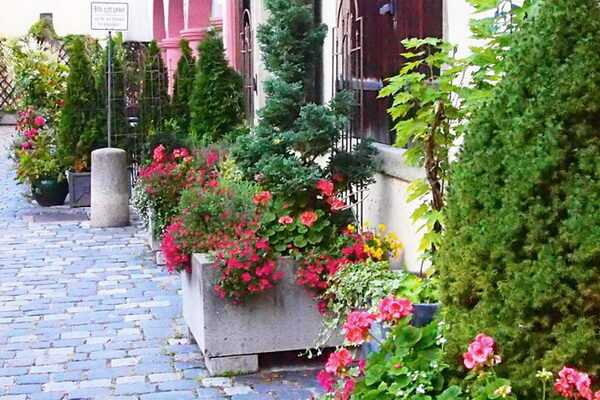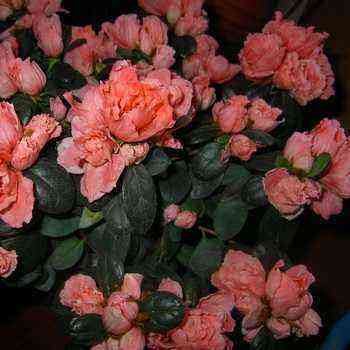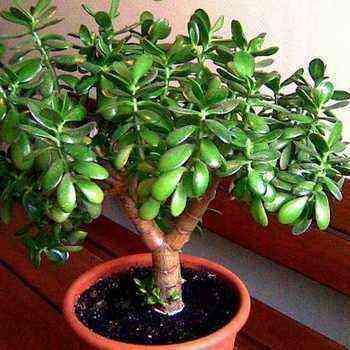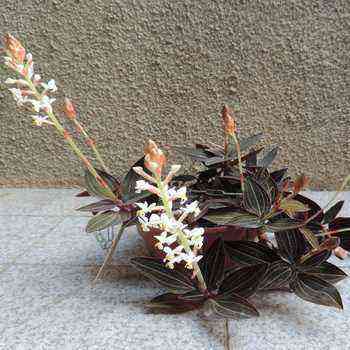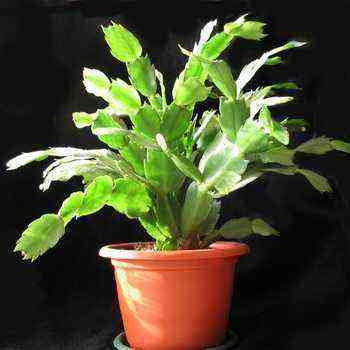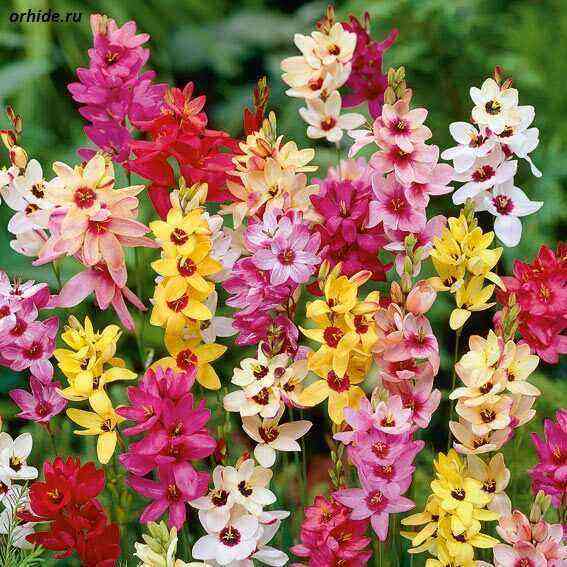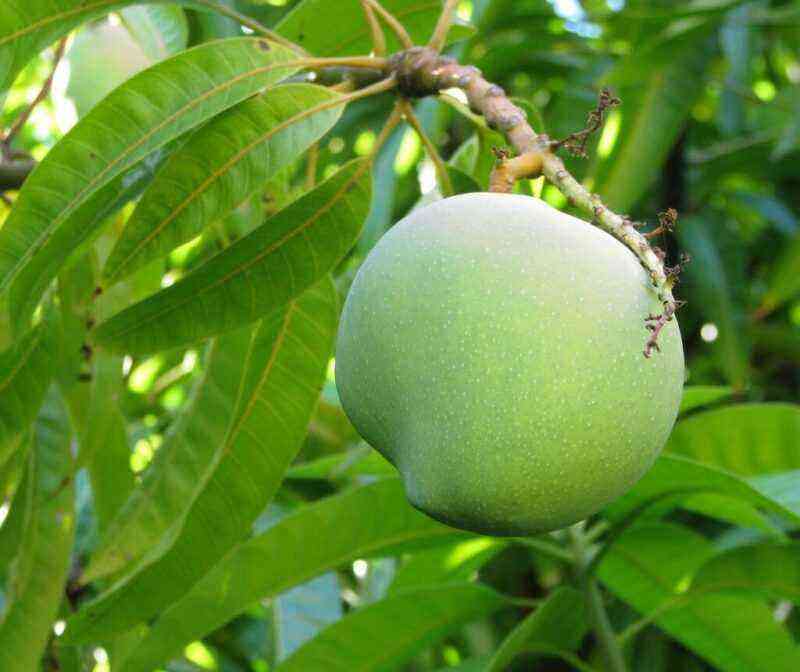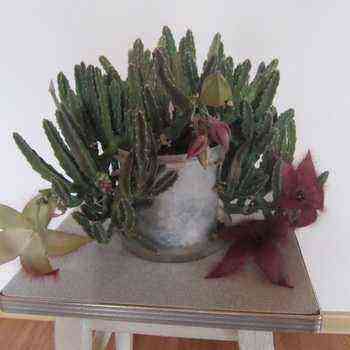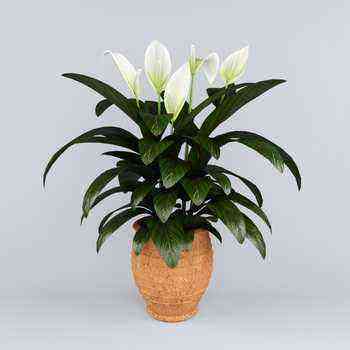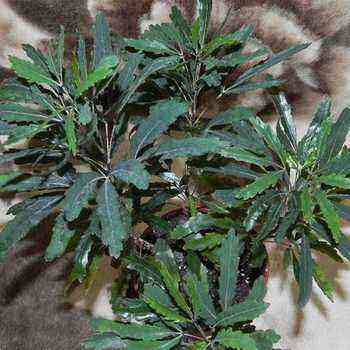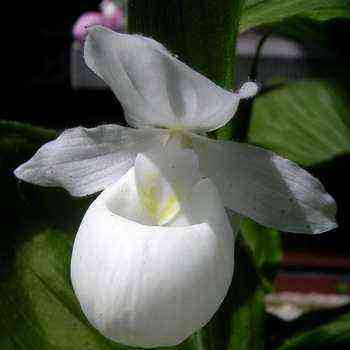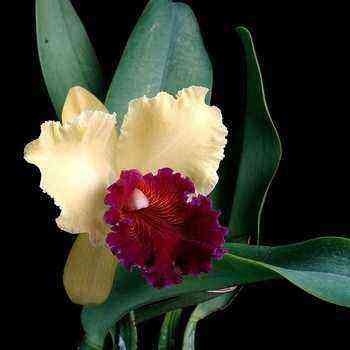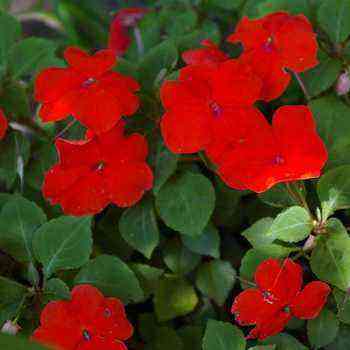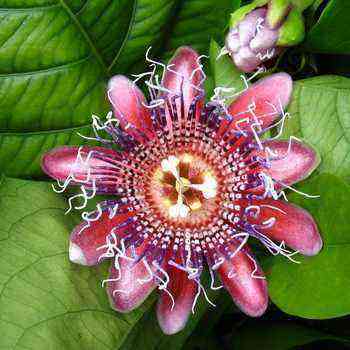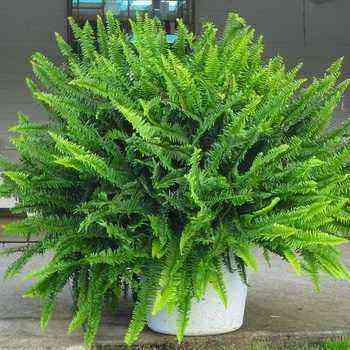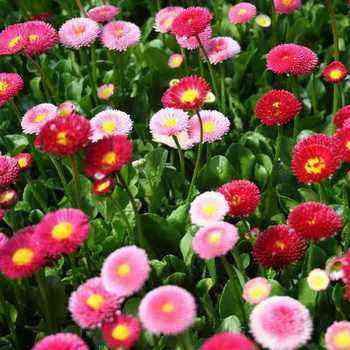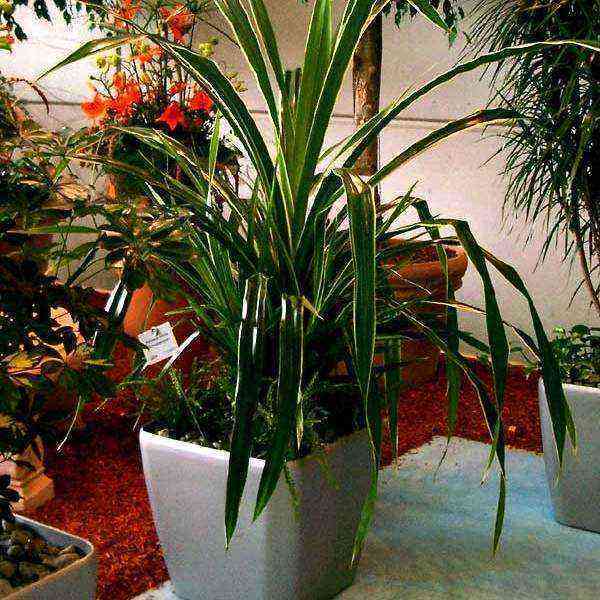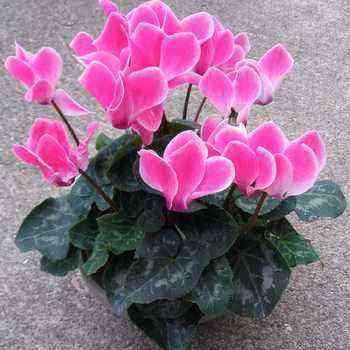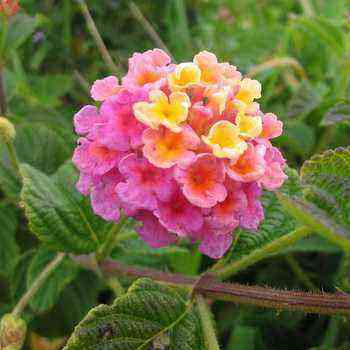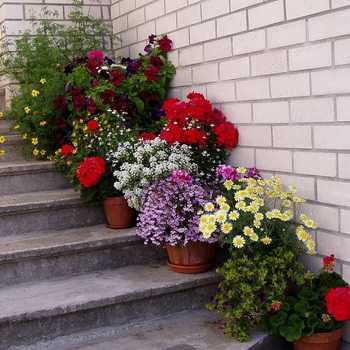
Container selection
Today, gardeners have such an abundance of containers of different sizes and shapes, flowerpots, hanging pots at their disposal for growing plants that their eyes run wide. Especially beautiful are containers styled as carts, baskets, large earthenware jugs, etc. Containers can have a wide variety of shapes, but their size, color and surface texture should be in harmony with the environment.
What should you pay attention to when choosing a container for planting flowers? First of all, of course, the size. Plants feel more comfortable in a large container and are therefore more durable. It is not only the diameter of the container that is important, but also the depth. In a flat flowerpot, the soil layer is small and dries up very quickly, which negatively affects the development of the root system.
When choosing the material from which the container is made, as a rule, they are guided by their own taste, but it must be borne in mind that containers that can retain heat and moisture are better than others. From this point of view, concrete containers are good. True, in the absence of a drain hole in such containers, the height of the drainage layer must be increased to 10-15 cm.
Clay and ceramic flowerpots keep warm well, but moisture evaporates from them rather quickly, so it is recommended to cover large pots from the inside with plastic wrap. Plaster containers are only suitable for plants that can tolerate root cooling (lobularia, cineraria, ornamental cabbage, viola). Containers made of wood are enduringly popular – they keep heat well and at the same time do not allow the earth to overheat in the bright sun. The only drawback of this material is its fragility, the tree rots quickly, so it is recommended to treat the inside of the container with special compounds or cover it with a film. Containers made of willow are very decorative and at the same time convenient – floor baskets, hanging pots, especially if their walls are lined with moss from the inside.
As for the color of the container, there is a general rule: it should not be conspicuous.
Therefore, soft colors are most often used: gray, beige, different shades of brown and olive. White containers look smart and festive.
Substrate requirements
After choosing the shape, size and material from which the container is made, the question arises about the soil that is optimal for plants. Most of the ready-made substrates available on the market are not very suitable for container growing of plants. The soil should be nutritious, air permeable, retain moisture and have a neutral reaction (acidity). The main components that make up the soil mixture are humus, sod land, high peat, sand. With these ingredients on hand, mixing them in different proportions, you can create a mixture for almost any crop.
Humus is obtained as a result of overheating of manure. Horse manure humus is considered the best (it is the lightest). Worse in quality, but more affordable, cow dung. And pork manure is practically unsuitable (very heavy). Humus is ready for use two years after storage. In its pure form, humus is never used: an excess of nutrients in the soil leads to the fact that the plants read to “fatten”, ie. develop leaf mass to the detriment of flowering. This is especially true for such cultures as the Mexican ageratum, nasturtium, and salvia.
Sod land. It is harvested in meadows and fields, especially where good clovergrass herbage has been preserved. The sod layers are cut into strips of arbitrary length, 20 ~ 30 cm wide and 8-10 cm thick and folded with grass against the grass (grass layers are watered with slurry). After two years of storage and sifting through a screen, such soil is ready for use. It is rich in nutrients and also retains moisture and air well.
Transitional peat is most suitable for container gardening in the country, but horse peat is more often used, which has a very high acidity and needs preliminary liming to the desired pH level.
Sand is used as a soil loosening component. Perlite, an expanded mineral used in construction, is often used for these purposes.
Depending on the size and material of which the container is made, the composition of the potting mix may vary. So, for large containers that retain moisture well (wood, concrete), the mixture can be made denser and with less organic matter, for example: from 2 parts of high-moor peat, 1 part of sod land and 1 part of sand or from equal parts of humus, turf and sand.
For hanging baskets and wall-mounted pots, the lightest soil is prepared with a predominance of peat and a moisture-consuming component: for example, 2 parts of humus, 4 parts of high peat, 1 part of turf and 2 parts of sand.
For a large balcony container for growing flowers, an earthen mixture consisting of 2 parts humus, 1 part peat and 1 part sand is most suitable. In any case, some kind of nutritious soil must be added to the soil mixture and, necessarily, sand, perlite or coal chips, semi-decomposed sawdust or chopped sphagnum moss should be used as a baking powder.
To provide plants with sufficient nutrients, it is necessary to add slow-acting fertilizers directly to the earthen mixture. Currently, there are “Osmokot” or “Multicot” fertilizers on sale, the action of which is designed for three to six months. For most flowering summer plants, it is recommended to add fertilizers with a high content of potassium and phosphorus, which are responsible for abundant flowering. If the plants respond well to nitrogen, it is better to add vermicompost or mineral fertilizer with a predominance of nitrogen to the soil, which is especially loved by marigolds, petunias, and pelargoniums. If the containers are in the sun, the soil will dry out almost constantly. To increase the moisture capacity, special fillers such as agroperlite or hydrogel can be added to the substrate, strictly following the instructions. And, of course, drainage is needed. As drainage, you can use expanded clay of medium and fine fractions, gravel, broken brick.
Selection of plants
In order to correctly select container plants for the garden, first of all, it is necessary to assess the external conditions: the illumination of the site, the presence of wind. Then it is worth thinking about plant compatibility: it is important that plants with different growth rates do not end up in the same container. In addition, it is necessary to take into account the size of containers – the smaller the volume, the more modest the assortment of plants that can maintain decorativeness for a long time.
They are especially careful in choosing plants that will be placed in a container on the south side of the house or on an open veranda facing south. In this case, the soil dries up instantly, while its temperature rises. In well-lit areas, it is recommended to avoid using dark plastic containers because they get very hot. Plants suitable for growing in such places are characterized by a semi-succulent structure. Their leaves are strong, leathery, silvery, blue or gray-green, with a protective cover from solar radiation. Can be used for container gardening at the dacha Canadian and hard verbena.
Marigolds, gatsanias, purslane, cyperargues and fiery red beans also withstand these conditions. The annual phlox nirembergia, godetia, and phacelia cannot practically tolerate an increase in soil temperature (the roots die from overheating if the soil is not overdried).
There are no less problems with the selection of the assortment even if the place intended for the container is not sufficiently lit, since most of the summer houses are extremely light-requiring. In such cases, I help out balsams (Waller’s balsam, better known as “wet vanka”, garden and New Guinea balsams), pelargoniums, fragrant tobacco, mimulus, Vittrock’s viola, nemesia.
No matter how well the soil is prepared, in a limited volume, the roots still lack moisture. The most resistant in this regard are ageratum, marigolds, verbena, gatsania, knotweed, kufeya, nasturtium, tobacco, chrysanthemums, zinnia. On the contrary, if there is a possibility that water will stagnate in a container, it is better to plant more moisture-loving crops, such as ornamental cabbage, limnantes, mimulus, chlorophytum.
We often fail when growing plants in balcony boxes. It seems that the conditions are good, and the care, but the desired result is not. Perhaps the wind is to blame. Plant wind-resistant plants with a compact bush structure and a highly developed root system: ageratum, marigolds, ivy, verbena, stonecrop.
The best options for container gardening are presented in these photos:
Planting of seedlings
There are many ways to plant containers, but it is best to use ready-made seedlings with a closed root system. Plants should be strong, healthy, previously cleaned of diseased or damaged parts, because they have to exist in extremely unfavorable conditions of high temperature, lack of soil, water, etc. Do not count on the fact that weak, frail seedlings grow in container will straighten and look prettier.
Do not strive to immediately plant plants, first place them directly in pots or without them on the surface of the soil, without burying them – combine, choosing plants by color, texture. At this stage, it is not too late to replace unsuitable specimens. And only if the accommodation option suits you, proceed to planting.
Planting depth of container seedlings, as a rule, should correspond to the previous growing depth. The exception is species capable of the formation of adventitious roots. For example, plants such as marigolds, asters, ageratum, when transplanted, can be deepened a few centimeters. The container is planted from the center outward. Moreover, if ampelous plants are planted along the edge of the container, they should be slightly tilted towards the edge. After planting and watering the plants, the soil in the container should settle at a level of 2-3 cm from the edge of the container.
Now with regard to the density of container planting of flowers for the garden: in order to achieve a quick decorative effect, you will have to use a compacted planting – up to 70 pieces per square meter, provided that well-developed seedlings are planted in a state of budding. If the plants are not yet ready for flowering, their number will have to be increased to 150 per 1 m2. With such a planting, the desired effect is achieved very quickly, but the decorative period is shortened, especially if species are used that do not tolerate a compacted landing (with the exception of marigolds,
ever-flowering begonia, ageratum, nemesia, viola). If the decorative period needs to be extended, the planting rates are reduced to 25-40 pieces per 1 m2, but at the same time the desired result will have to wait at least 3-4 weeks.
When selecting plants for a particular container, the general rules for composing compositions are used. At the same time, the laws of colorism, the peculiarities of the shape of leaves or inflorescences are taken into account. The simplest way to decorate a container is to plant one crop, for example, ivy pelargonium or surfinia petunia. To prevent the composition from looking boring, you can use several containers from the same material, but in different sizes and shapes.
If different types are planted in a container, it is necessary to highlight the main ones among them. They are usually placed in the center of the composition. The ampelous ones are always planted from the edge, and the auxiliary ones fill the remaining space.
In containers, you can grow not only annual flowers, but also spicy-aromatic, vegetable crops. Most often, hyssop, mint, oregano, various types of sage, lavender, rosemary are used for this; special low-growing varieties of tomatoes, peppers, eggplants, as well as green crops – parsley, dill, celery.
Given our harsh winters, most crops will have to be grown as annuals. But if there is a desire to grow perennial flower crops in containers (for example, badan, hostu, liriope, astilba), it is recommended to dig containers in the garden for the winter or store them in special rooms at a temperature of about 3-5 ° C. The same can be done with bulbous crops.
Flower care
All your work will go to waste if the plants are not properly cared for in a container. The most important thing is watering. Of course, the amount of water and the frequency of watering depends on many reasons, including the weather, container size, and the nature of the crops planted. However, in hot dry weather, small containers, hanging planters and baskets have to be watered daily and sometimes twice a day (morning and evening). Hanging baskets are recommended not even to simply water, but to completely immerse them in a container of water to completely saturate the soil.
When the air is very dry and windy, plant leaves can wither even with sufficient soil moisture. In this case, it is recommended to additionally spray the plants directly on the leaves. Watering must be carried out from special watering cans or from a hose with a very weak stream in order to avoid washing out and compaction of the soil. After forced overdrying of the soil and strong wilting of plants, it is recommended to gradually saturate the soil with water, followed by treatment of plants with growth stimulants (humates or epin).
The question of feeding is also very important. The limited volume of soil does not allow the use of strong concentrations of mineral fertilizers in top dressing. Therefore, the rule is this: it is better to feed more often (once every 5-7 days), but with a solution of low concentration – about 5-7 g per 10 liters of water. As for the fertilizers themselves, it is better to use the so-called complete mineral fertilizer containing the basic elements necessary for plants (nitrogen, phosphorus, potassium), with the addition of various microelements. The fertilizer brand should change depending on the season: immediately after planting and in the first half of summer, as well as after pruning the plants, it is recommended to feed them with full fertilizer with a predominance of nitrogen – to stimulate growth, and to increase flowering during the season, it is better to use fertilizers with a predominance of phosphorus and potassium. It is important to alternate root and foliar (spraying on the leaves) top dressing, especially in small containers, where frequent root dressing with mineral fertilizers can cause soil salinity.
Of great importance for the preservation of long-term decorativeness is the timely removal of faded inflorescences, yellowed leaves, thinning of thickened shoots (shoots are cut out entirely, especially those located closer to the edge of the container, since they most often rot).
It is difficult to give recommendations on the selection of the assortment – fantasize, try. One of the most beautiful and unusual containers that I have ever seen consisted of caudate amaranth, Swiss chard and balsam of New Guinea. It seems to be a “hellish mixture”, but very beautiful.


